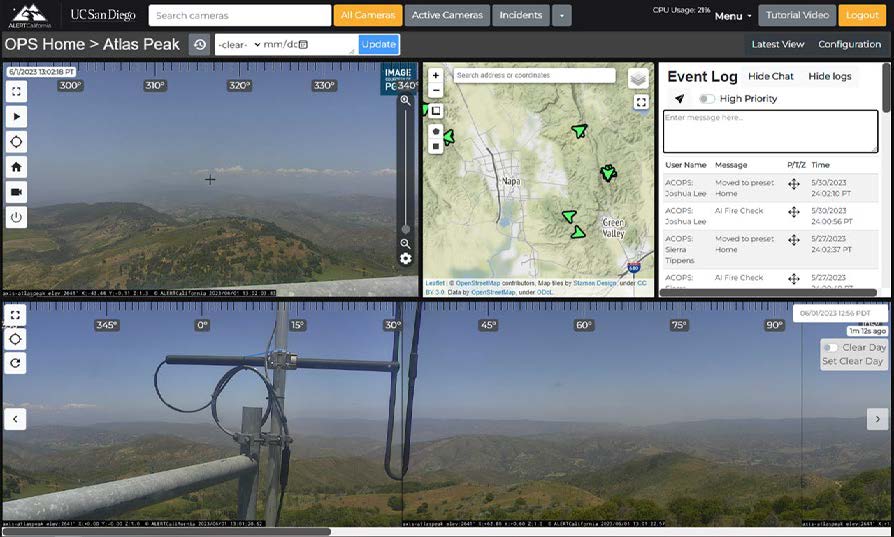Written by the California Department of Forestry and Fire Protection
Sacramento – The California Department of Forestry and Fire Protection (CAL FIRE) is pleased to announce its groundbreaking partnership with University of California San Diego’s ALERTCalifornia program. With the shared goal of improving firefighting capabilities and response times, CAL FIRE and ALERTCalifornia will embark on an innovative Artificial Intelligence (AI) implementation trial in collaboration with the San Bernardino Unit, Sonoma-Lake-Napa Unit, Madera-Mariposa-Merced Unit, Nevada Yuba Placer Unit, Shasta-Trinity Unit, and San Luis Obispo Unit.
At the heart of ALERTCalifornia’s cutting-edge technology are its 1,032 high-definition, pan-tilt-zoom cameras strategically deployed throughout California. These cameras, including the 199 sponsored by CAL FIRE, create a 24-hour surveillance network equipped with near-infrared night vision, enabling efficient monitoring of active wildfires and other disasters. With remarkable capabilities, ALERTCalifornia cameras can perform 360-degree sweeps approximately every two minutes, providing clear visuals of up to 60 miles on a clear day and an impressive 120 miles on a clear night. Visit the ALERTCalifornia website and explore their “camera quilt” to access live camera feeds and detailed network information: alertcalifornia.org
One of the key innovations being introduced through this partnership is an advanced AI tool developed by ALERTCalifornia. This groundbreaking tool is designed to identify abnormalities within the camera feeds, promptly notifying Emergency Command Centers (ECCs) and First Responders of any significant changes that may require further investigation. Limited to authorized and trained ECCs and First Responder users, this AI tool utilizes state-of-the-art anomaly detection techniques, which are particularly challenging to implement effectively. By leveraging the vast petabytes of data recorded by the cameras, a machine-learned model has been created to accurately differentiate between smoke and other particles in the air.
CAL FIRE’s significant investment in the ALERTCalifornia program has totaled $20,277,000 over the past four years, and the commitment will continue with an additional funding of $3,516,000 in the coming years. This collaboration with UC San Diego has proven highly successful, as technology advancements are shared as open-source and freely accessible resources to benefit a broader range of users. The AI implementation trial aims to unlock the immense potential of AI technology in wildfire prevention, detection, and response.
By harnessing the power of AI, we have the opportunity to revolutionize our firefighting strategies by analyzing vast amounts of data, predicting fire behavior, and providing real-time insights to firefighters on the ground. The ALERTCalifornia platform will ensure the development of an exceptional tool, making it accessible to all First Responders across California.
By combining the expertise of CAL FIRE and UC San Diego’s ALERTCalifornia program, this groundbreaking partnership strives to create a safer and more resilient California. Together, we are working towards a future where advanced technologies enable us to effectively combat wildfires and protect our communities.


